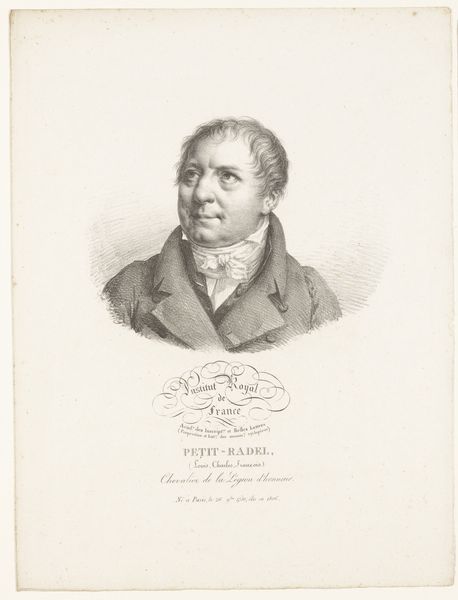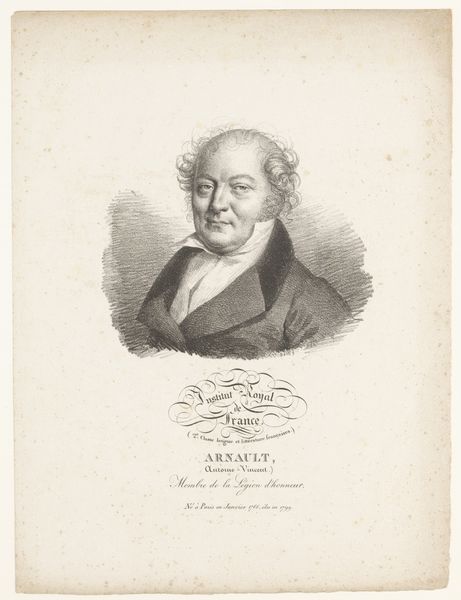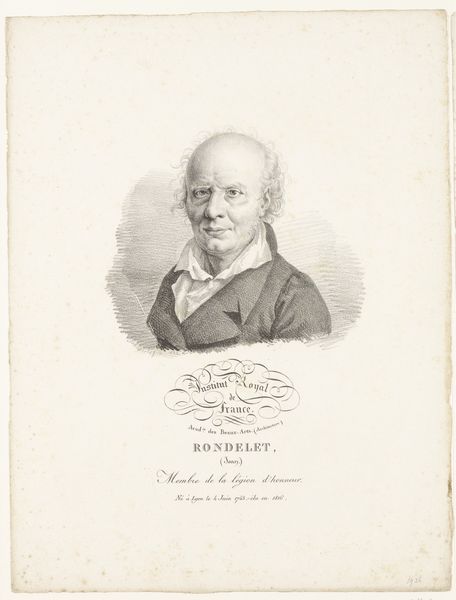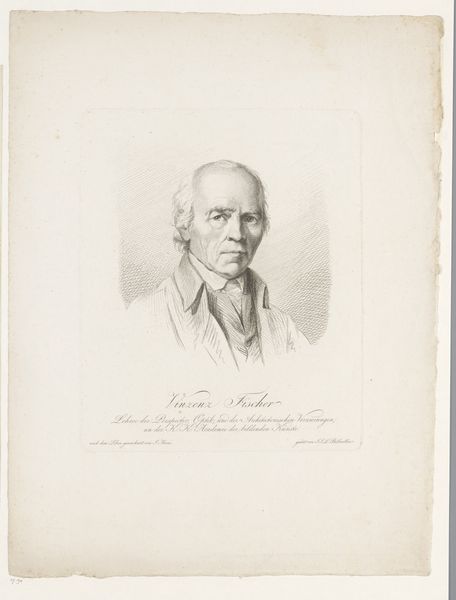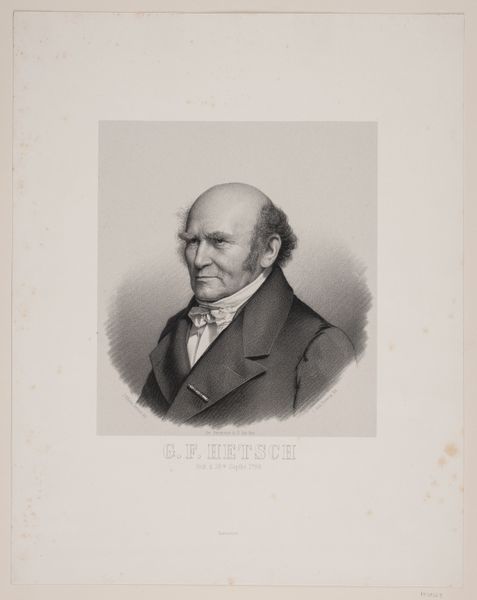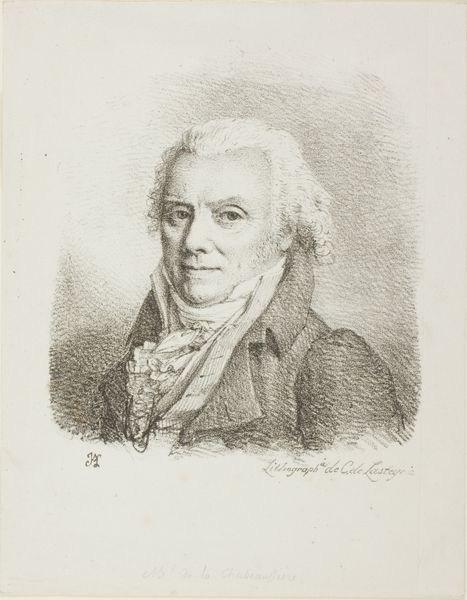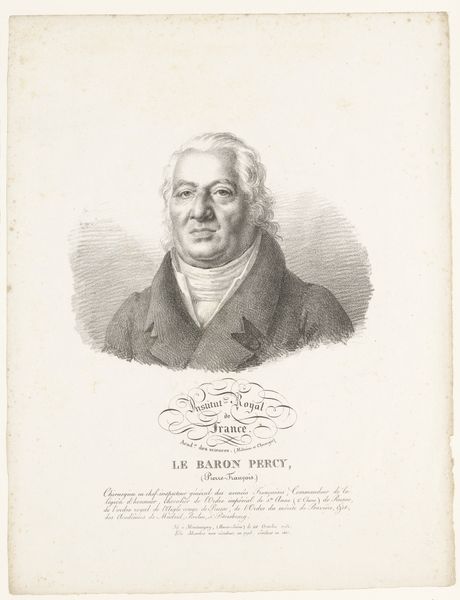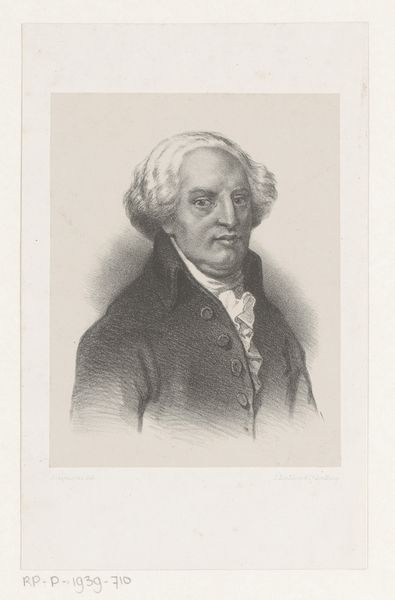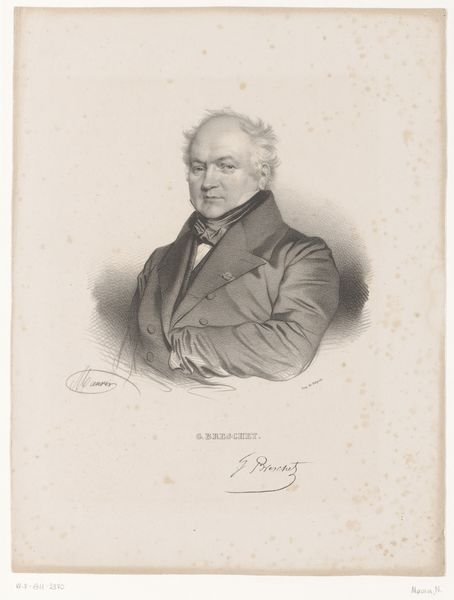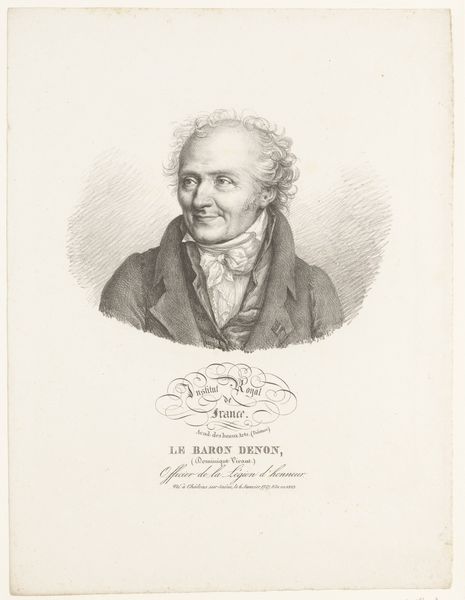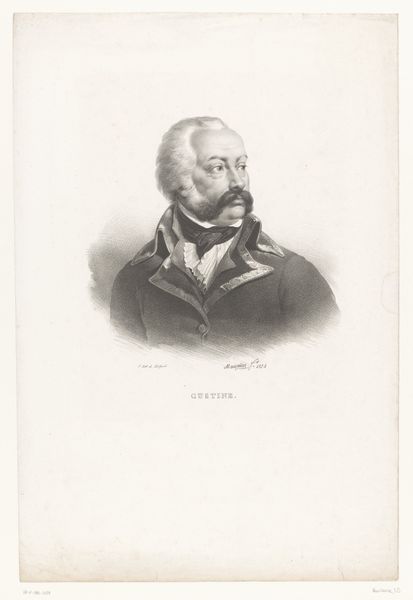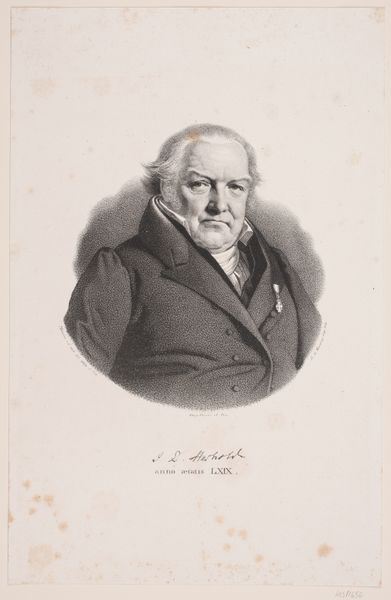
drawing, ink, pencil, engraving
#
portrait
#
pencil drawn
#
drawing
#
neoclacissism
#
old engraving style
#
ink
#
pencil drawing
#
pencil
#
portrait drawing
#
engraving
Dimensions: height 361 mm, width 272 mm
Copyright: Rijks Museum: Open Domain
Curator: Julien-Léopold Boilly created this engraving, titled "Portret van de architect Antoine-François Peyre," around 1820. It's a wonderful example of neoclassical portraiture. Editor: Wow, it looks like a memory surfacing from the past, all delicate lines and faded elegance. I almost expect him to cough lightly and offer me a powdered wig. Curator: Indeed! The artwork really embodies the restrained aesthetic that defined the Neoclassical era, but if we delve into Peyre's world as an architect and member of the Institut Royal de France, the portrait suggests more than just style; it hints at power and influence during a period of social and political upheaval. The French Revolution looms in the recent past, right? Editor: Absolutely! But on a more personal note, look at the detailing on his face, it's extraordinary. You can almost read his life story etched into those fine lines around his eyes. Makes you wonder what secrets he holds. Curator: It brings into question, what are the politics inherent in portraiture during this time? We must remember these weren’t off-the-cuff snapshots. Representation was deeply linked to social mobility. As "Chevalier de St. Michel et de la Légion d'honneur," the medals he proudly displays, we’re witnessing the performance of power, the negotiation of identity through visual language. Editor: It’s fascinating how an image created over two centuries ago can still stir feelings and questions. This feels timeless. The subject's intense gaze holds so much. I feel a strange sense of connection to a man I've never known. Curator: The convergence of history, artistic method, and individual presence within this engraving provides us a powerful point to interrogate art’s relationship to larger societal structures, our histories. Editor: You've made me look beyond the aesthetics to understand the deeper layers in this depiction of this architect and his world. I see him not just as a historical figure, but as a human being grappling with his own place in a turbulent era.
Comments
No comments
Be the first to comment and join the conversation on the ultimate creative platform.
